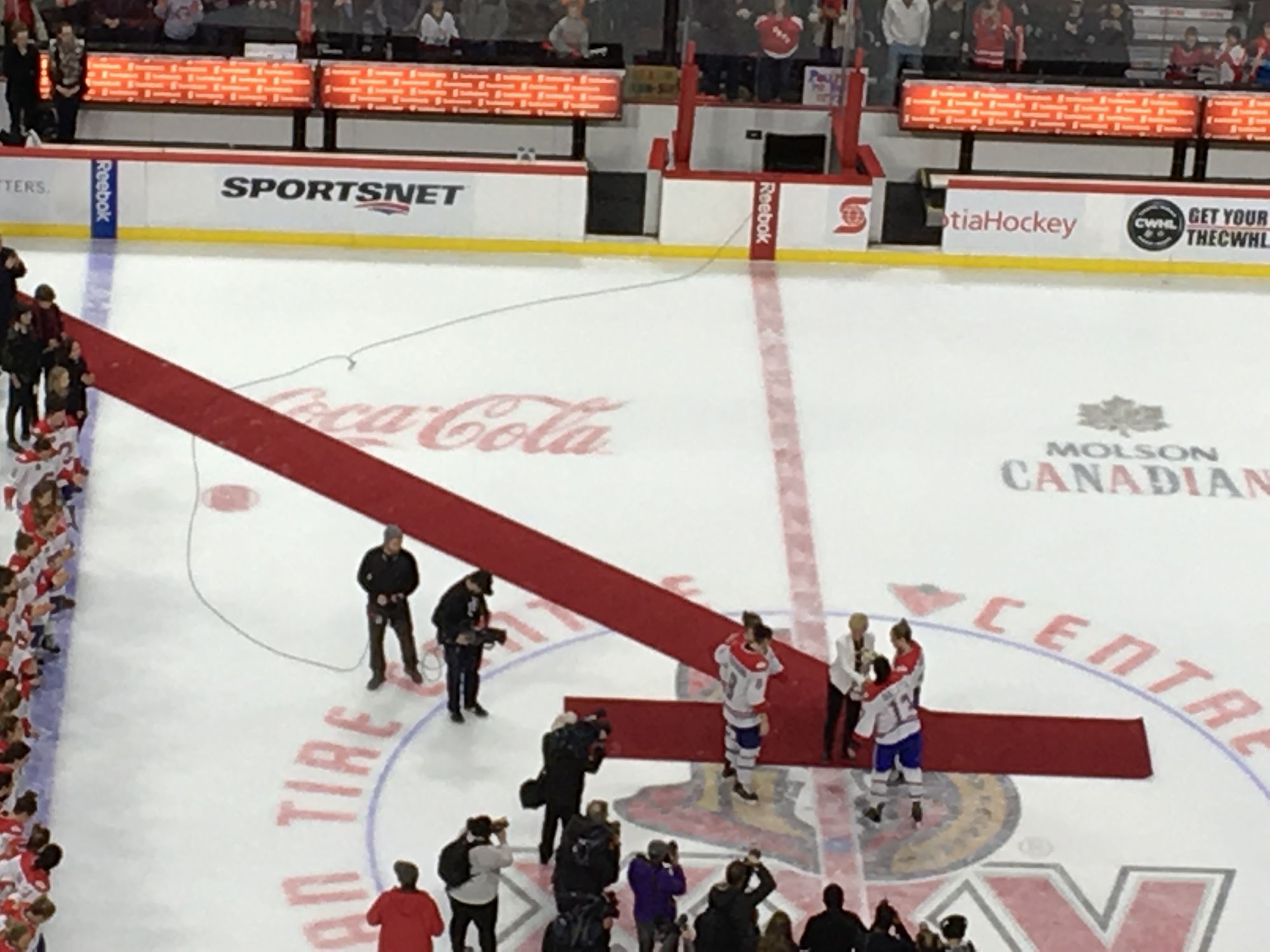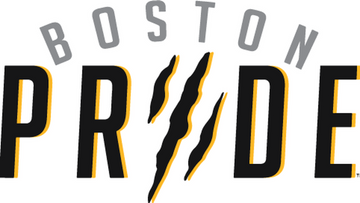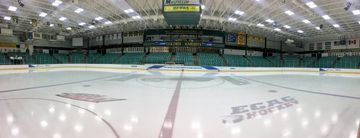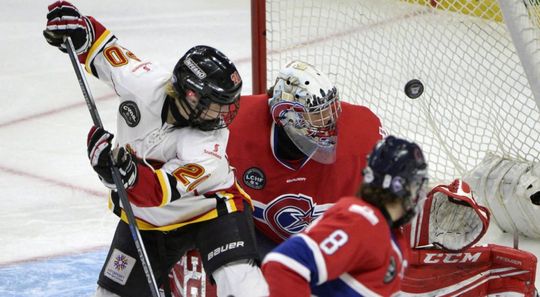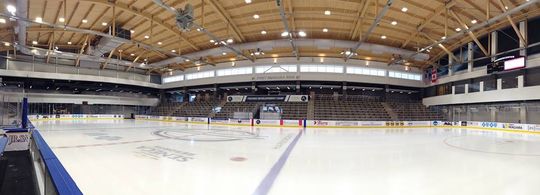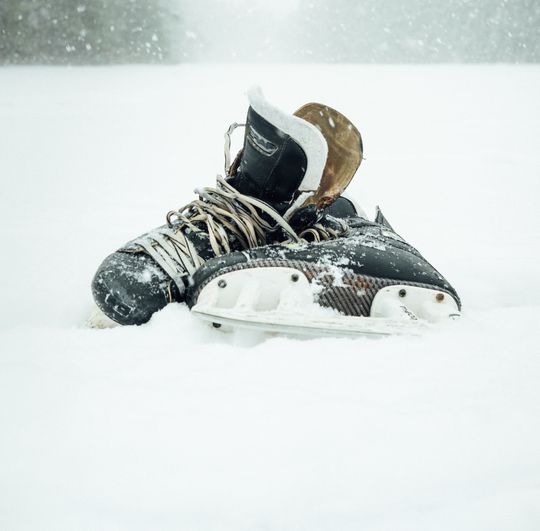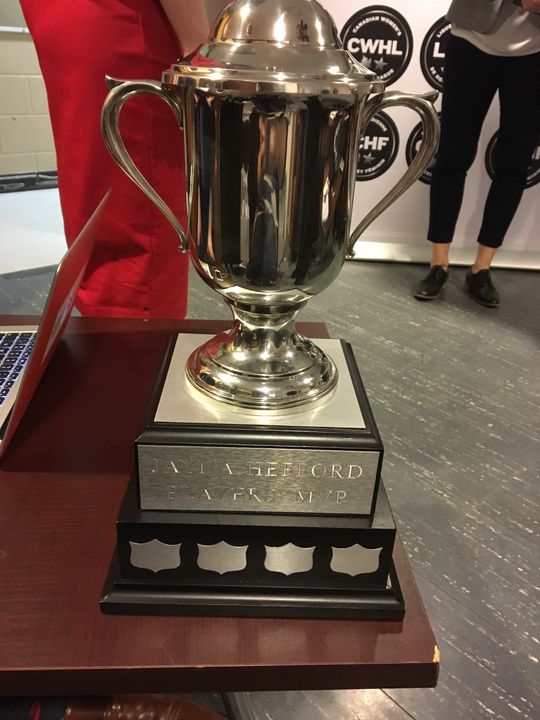2017 is shaping up to be the biggest year yet for the ongoing paradox of women's hockey. Every four years since 1998, women's hockey has headed to the Olympics -- and no women's pro hockey league before the CWHL has survived for more than two Olympic cycles. The inconsistency in both interest and funding has created a strange environment for the CWHL as many players and women's hockey fans look ahead to Pyeongchang. The context of the Clarkson Cup this year is heavily steeped in these impending changes.
Some players who competed on Les Canadiennes and the Calgary Inferno this year may not return to their teams. The CWHL undoubtedly makes Team Canada (among other international teams) better by keeping its athletes conditioned and playing regularly in between international tournaments. But it can make a Clarkson Cup win as bittersweet as it is enthralling. CWHL rosters are about to look a lot different and lose some of their biggest names to centralization and potentially to retirement. This comes at a time when exposure for the women's game is bigger than ever. The CWHL has begun streaming its games on YouTube and the broadcast quality has increased dramatically from just one year ago. More games than ever are on Sportsnet and the Clarkson Cup Final has been televised nationally for several years. However, while the CWHL's product is excellent, the Olympics has a way of looming over it.
Not that the Olympics are a shining beacon of purity in sport; each Olympics in every year they take place is riddled with controversy. And yet, the Olympics are inescapable because they remain the highest level of competition that can be achieved in many sports, and even in those sports that have better competition outside of international play, many athletes prize the opportunity to represent their countries on a global stage.
In hockey, though, the singular prestige of a league championship and the unique dynamic of a team that plays together consistently for multiple seasons creates unique and sustained drama. In women's hockey, those teams get broken up more easily, and for a variety of reasons. The 2016-17 CWHL season was one of the most stable and successful in the league's history. And yet what comes next is anybody's guess.
The Calgary Inferno quickly became one of the most skilled hockey teams in the world, period, after the 2014-15 season. They became stacked at every position. This year, while they lost Hayley Wickenheiser to retirement, they still boasted a potent and deep offense, and they added two number-one goalies, in the form of Emerance Maschmeyer and Geneviève Lacasse. In the Clarkson Cup Final, they had the misfortune of becoming a perfect team on paper that simply did not execute. It was a complete reversal of their previous season, when they were a perfect team on paper that became greater than the sum of their parts on the ice.
"[There were] a lot of things we didn't do in the first two periods and I think everybody in the stands noticed a difference in the third period. We were all over them, but they outplayed us the first two periods and that's what won the game," said forward Blayre Turnbull, whose two goals in last year's final put the nail in the coffin for Les Canadiennes.
Captain Brianne Jenner's take was similar: "I think in the second half of the game, we did [give it our all]. I think we came out a little flat in the first and just took too long to get things going. I believe we had a chance at the end. I thought we had momentum. Sometimes it doesn't go your way."
"I'm sure you can find positives all over the place, but your ultimate goal is to win it, and when you fall short, it's devastating," said Inferno head coach Scott Reid. "The girls are feeling it right now."
Les Canadiennes had consistently been at the top of the pack in terms of their roster and record, but have been unable to capture the ultimate prize since 2012. A series of difficult playoff losses was in their rearview, and 34-year-old Charline Labonté had never won the trophy.
"I feel like yesterday I was here, talking to you guys [the media], saying that I messed up [last year] and I felt so bad for my team. And like I've mentioned, when you lose that badly you need to take something away from it and learn," Labonté said in the media room after the final, still wearing her pads and soaked in champagne. "And I think that's what we did. And you want to move on, but at the same time, for me anyways, it was always in the back of my mind and every time we played Calgary I wanted to beat them. And I wanted to make sure that we got back exactly here against them. So that we could get our revenge."
On whether she would return to play, Labonté said:
It's definitely coming to the end of my career, that's for sure. Couple more years? I don't know. Or maybe it's over because I won the Cup and that's it, that's all, that's all I want. But I don't know! I'll take a step back and really enjoy it, enjoy the group of people that we won it with. And I don't know, no pressure. We'll see.
Revenge was sweet for her: as MVP of the playoffs and a new member of the Triple Gold Club (Clarkson Cup, Olympic gold medal, and World Championship), Labonté joins Hayley Wickenheiser, who won her first Clarkson Cup last season with Calgary before retiring from hockey. The Cup has a mythos all its own, though, as part of the CWHL's growing longevity.
Before the Clarkson Cup Final, Commissioner Brenda Andress said:
Next year's an Olympic year, so there's a lot of different things we have to plan for, lots of different ways to ensure that the CWHL continues to brand themselves and continue to utilize our players who are in the Olympics. And to continue to utilize the players who aren't in the Olympics, who are just as important to us in our league as those that are.
This hints at an endgame of true parity for the CWHL -- it's already as exciting and as competitive (if not more so) than professional men's hockey, just on a smaller scale. We're already having a more widespread discussion of players who were left off of national teams and who perhaps should be there, with Montreal's Ann-Sophie Bettez becoming the most prominent example. The best-case scenario for women's hockey, financial realities notwithstanding, is that the selection process for the best teams (the national teams as well as the pros) becomes so competitive and tough that everyone truly has a chance at a championship.
There will always be growing pains, of course. The sudden emergence of the NWHL and the subsequent en masse exit of the US women's national team from the CWHL may have made many forget how close the CWHL actually is to being a league of five evenly matched teams.
"Who cares how many national team players they have on that team? We can do it, we can do it together," said Caroline Ouellette, summarizing her team's attitude towards winning the Clarkson Cup. "You know, it might be corny, but I think love is stronger than anything, and that's what we have in our team, from our coaching staff, to all of our players. We are playing for one another."
Ouellette may not be returning to the national team as a player, but she'll be assistant coaching in Plymouth at the Women's World Championships in a few weeks. She sees herself coaching in the future. But the chance to have her first Clarkson Cup in five years handed to her on one knee by Marie-Philip Poulin, to lay out and block shots for Charline Labonté so that she could win her first Cup? That's the inimitable mythos we're talking about.
With the Canadian national team out of the league next year, there will be an addition by subtraction. The Toronto Furies' 2014 Clarkson Cup victory came during an Olympic year and it was an extremely dramatic, one-goal game. Tighter games without the usual superstars filling the net can be more exciting hockey.
Plus, the void left in the absences of players like Brianne Jenner and Marie-Philip Poulin will give other players the chance to grow both as players and as leaders, much like we saw when the Blades did lose most of their roster to the NWHL last year. They played much better in their second season under new management and with a revamped roster, winning a few games and developing a few strong offensive players in the form of Kate Leary and Meghan Grieves. The change won't be as dramatic as that for Les Canadiennes and the Inferno, but it will define a huge part of the CWHL's future.
Women's hockey is a sport that isn't trying to find its talent or its niche or its audience or its space. It already has a lot going for it across the board -- particularly with both the talent and the fanbase. Space is a challenge, but that's because of the finite amount of resources and the fact that, in 2017, after 10 years of the CWHL, women's hockey is still being asked to "prove" itself in order to get the men's game to cede space and money.
But it's a tricky problem, as there will be no ceding; men's hockey still believes that this is a meritocracy and that they own the space by virtue of their quality. They haven't yet admitted, and may never admit, that they have received it by default. The most frustrating thing about watching and waiting for the seas to part is knowing that the business model of a professional sports franchise was designed for and by men, and that the model that allows women's sports to succeed may not have even been conceived yet. Resources would have to be redistributed. If it won't be by simple ceding, it may have to be by silent coup.
The unfortunate circumstance of women's hockey is that it has always been a game with a giant "reset" button looming overhead. It could be an NCAA or CIS career, an Olympic cycle, or the life cycle of a pro team. Every four years in women's hockey, something resets, and pieces get lost. The challenge has not been in the quality of the show, but in the continuity of its thread.
With unprecedented visibility and more eyes on the product than ever before, the CWHL has a new opportunity to create continuity and keep its product operating at a high level and in some degree of spotlight. The best-case scenario would really be that we never have to hit that reset button again, and women's hockey becomes a story that lives seamlessly through Olympic years, shared and re-experienced. When the deck gets reshuffled, pieces won't get lost. We'll know where to find them. They'll come back.
